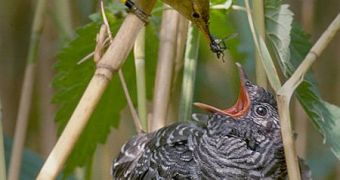According to a new series of investigations, it would appear that cuckoos are being heavily influenced by climate change and global warming.
The birds now appear to be changing their targets of choice when it comes to laying their eggs in another nest. The creatures are famous for doing that.
In parts of Europe, changes and shifts in the normal temperature levels have caused the local bird species to fall out of sync.
This means for example that the cuckoos no longer lay their eggs at the same time as their preferred victims, which further means that they need to find new bird species in whose nests to lay their eggs.
The birds are what is in the scientific community referred to as a brood parasites, species of animals that prefer not to raise their own offspring.
In the case of the cuckoo, the bird lays its egg in the vacant nest of another species, and then goes on its way. The unsuspecting victim keeps the foreign egg warm until it hatches.
When this happened, the cuckoo chick is regularly larger than its brethren, and pushes them out of the nest so as to eliminate competition. It then becomes the sole recipient of the food its “parents” find.
Generally, the cuckoos that live in Europe were renowned for laying their eggs in the nests of birds that did not migrate, or which left the lands for short periods of time each year.
However, experts are now discovering a new trend, in which the cuckoos lay their eggs in the nests of long-distance migrating birds, say experts at the CNRS.
This French national research organization is based at the University of Paris South, in Orsay, Science News reports. The work was conducted by CNRS researcher Anders Pape Moller.
The expert and his group detail their discovery in the September 13 issue of the esteemed scientific journal Proceedings of the Royal Society B.
“This study clearly illustrates how climate change not only alters the timing of breeding in many species but also disrupts the exquisitely timed interactions between closely interacting species,” explains scientist Naomi Langmore.
The expert holds an appointment as an evolutionary ecologist at the Australian National University, in Canberra.
The researchers now plan to continue their work, in an attempt to determine whether the same shifts appear in cuckoo species living elsewhere in the world, such as for example in the United States.

 14 DAY TRIAL //
14 DAY TRIAL //